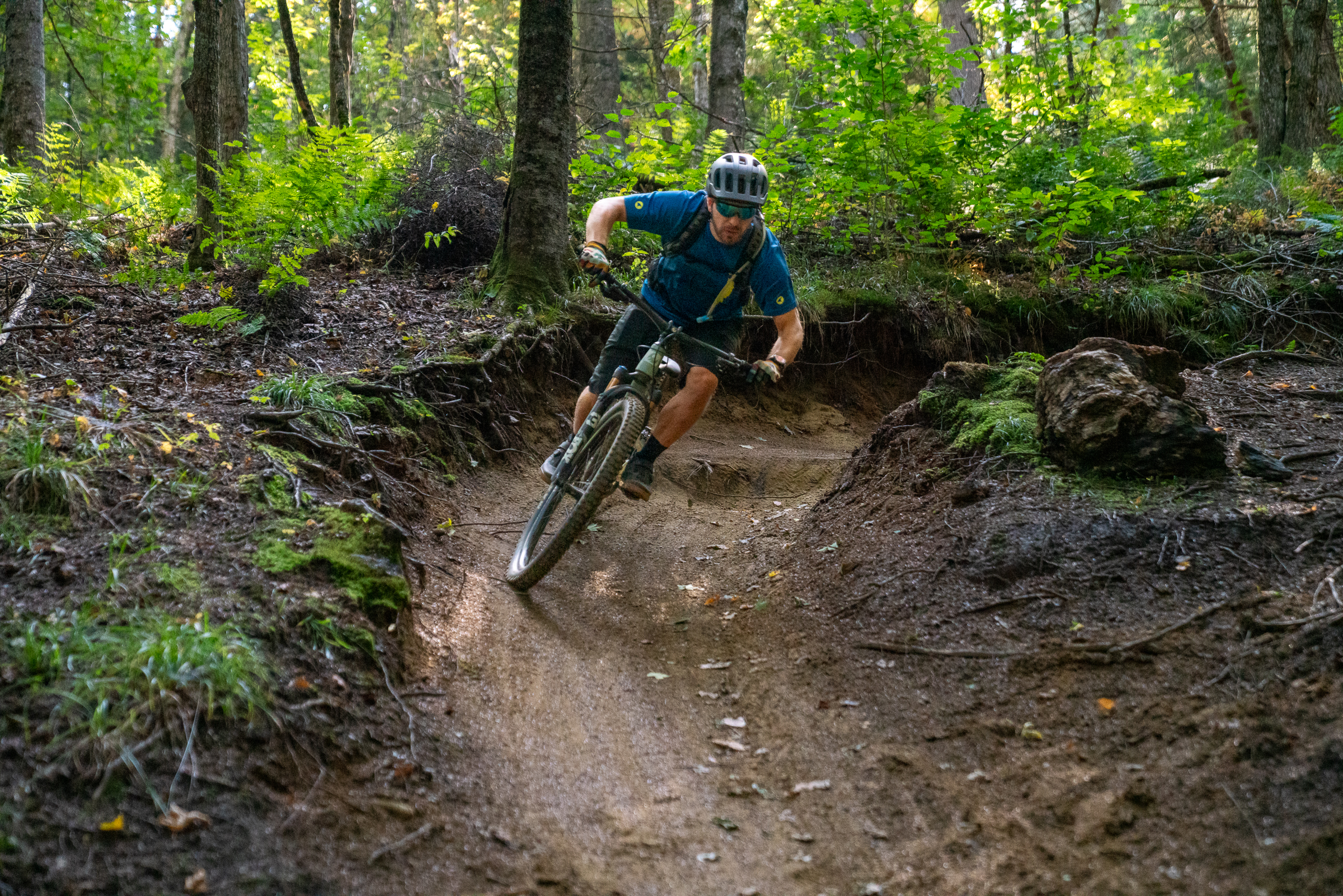
Kingdom Trails in Vermont needs no introduction. Or maybe it does. At the very least, the trail system deserves a reintroduction, especially if you’ve only heard about the place, or haven’t ridden there in a while. A lot has changed in the Kingdom over the past six years, with beloved trails lost, new trails built, and trail access expanded. I’ve been covering mountain bike trails for more than 20 years, so I had an idea about what Greg and I might find when we visited Kingdom Trails in September. And still, the riding exceeded my expectations.
Come for the flow, stay for the miles
Kingdom Trails is known for its flow, which for many years helped the trail system stand out from the mostly rocky, rooty trails found in the surrounding region. In fact, the Kingdom Trails Association was formally organized back in 1994, well before the term “flow trail” was even invented. The thing is, the 1990s and early 2000s idea of flow is very different from what riders expect today, and personally, I don’t miss those days. Back then, flow meant smooth trails and relatively short climbs.
Case in point: Widow Maker, the first trail Greg and I rode on our visit. After years of love, I hate to say it but the roots are showing on this formerly bleach-blonde trail. The corridor is wide, the turns are flat, and the vibe is tired. A friend warned me ahead of my trip that Kingdom Trails was overrated, and this first trail instantly confirmed his assessment. Maybe Widow Maker was a fun trail to ride ten years ago, but by modern standards, it’s a buzz killer.
At the bottom of Widow Maker, a fresh trail, still unnamed, climbs back up to the top. Machine-cut and rising at a steady grade, the trail looked as if it could have been airlifted from Arkansas or even my home state of Georgia. Bland, yes, but it got the job done.
We rode 11 miles in this zone, on both sides of Darling Hill road near the Wildflower Inn, which offers excellent trailside accommodations and a restaurant. Sidewinder. Hog Back. Old Web’s. These trails were fun; however, Greg and I were both left wanting more. If this was all we rode at Kingdom Trails, we would have left disappointed. But Kingdom Trails is much bigger than a single zone, and the new trails, many of them adaptive-friendly, are some of the most entertaining I’ve ridden in a while.
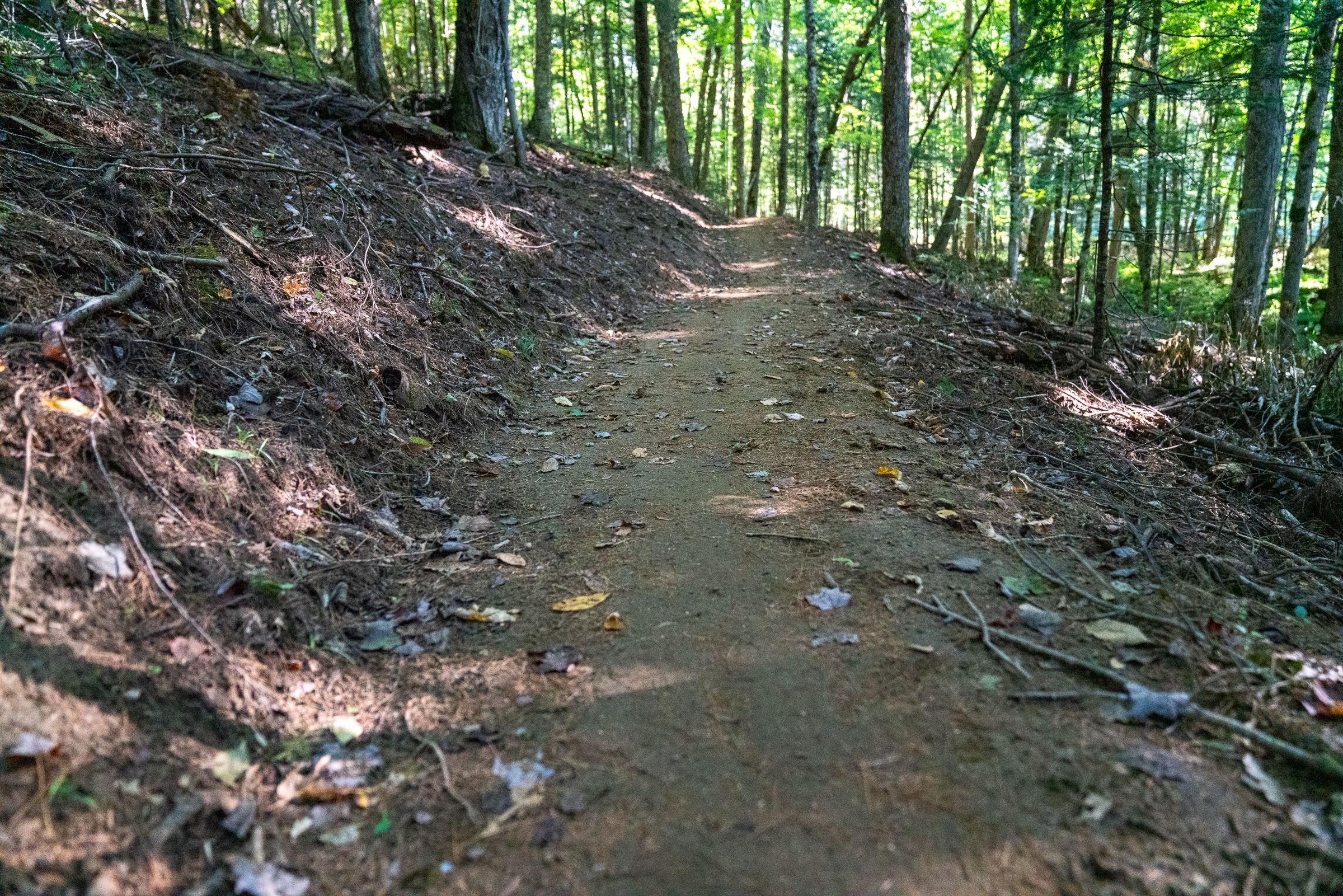
19 new trails in five years
Kingdom Trails has long been a popular mountain bike destination, and by 2018, visits had ballooned to 137,000 riders a year, straining local resources… and local residents’ patience. Then, in 2019, Kingdom Trails was thrown into dire straits. Most, if not all, of the trails in the system are located on privately owned land, and three out of the 97 landowners at the time revoked access to a few key parcels. At the time of the closure, rumors suggested the landowners felt they were being disrespected by mountain bikers accessing their land. As a result, not only were favorite trails closed, but key connections within this massive trail zone were lost for good.
Kingdom Trails Interim Executive Director Georgia Gould — yes, the same Georgia Gould who won a bronze medal in mountain biking at the Olympics in 2012 — told me that since the loss, Kingdom Trails has actually expanded. “We definitely have more trails now than we did before the closure,” she said.
Greg and I finished our 11-mile Darling Hill road loop at the Wildflower Backyard, a collection of skills features, dirt tracks, and flow trails that didn’t exist back in 2019. The trails are modern, fast, flowy, and most importantly, fun.
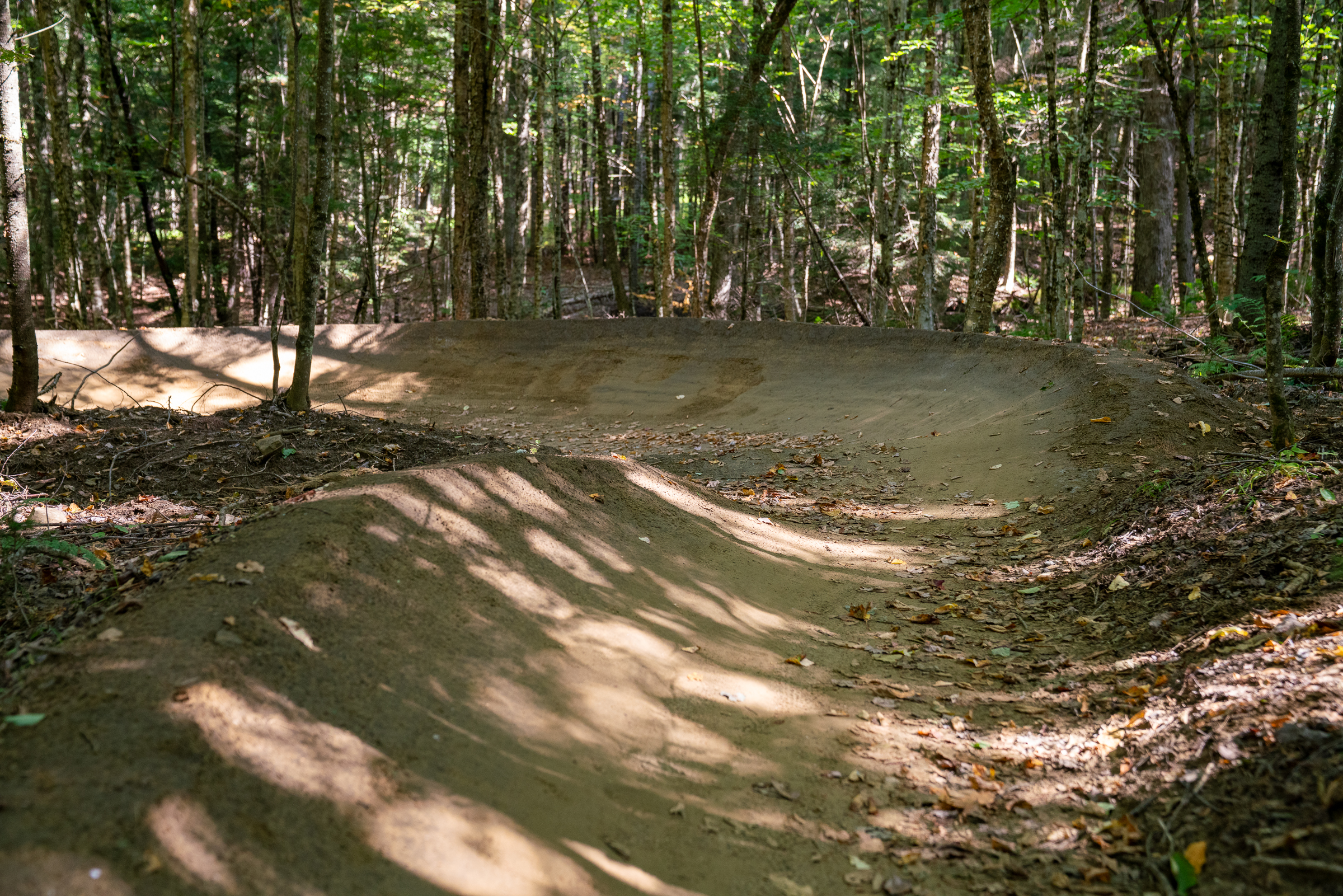
Dropping from the field into the dark forest, I was shocked to find berms on the Pete’s Dragon trail that looked like they were carved from fresh modeling clay, the tops squared off to perfection. I took a second run on Pete’s, then went back up the hill again to sample the black-diamond trail, Sean’s Showdown. With big jumps and lips, it felt like a short and sweet version of a trail you might find at the Whistler bike park.
“So this is where they’re hiding the good stuff,” I thought to myself. As it turns out, there’s a lot of good stuff at Kingdom Trails, though it’s spread throughout the network. And that’s on purpose.
“We’ve really tried to spread people out a little bit more and not have like, ‘Oh, if you go to Kingdom Trails, you have to ride in this one place.’ Which is sort of how it was,” said Gould. For many riders, and for many years, that “one place” was Darling Hill road.
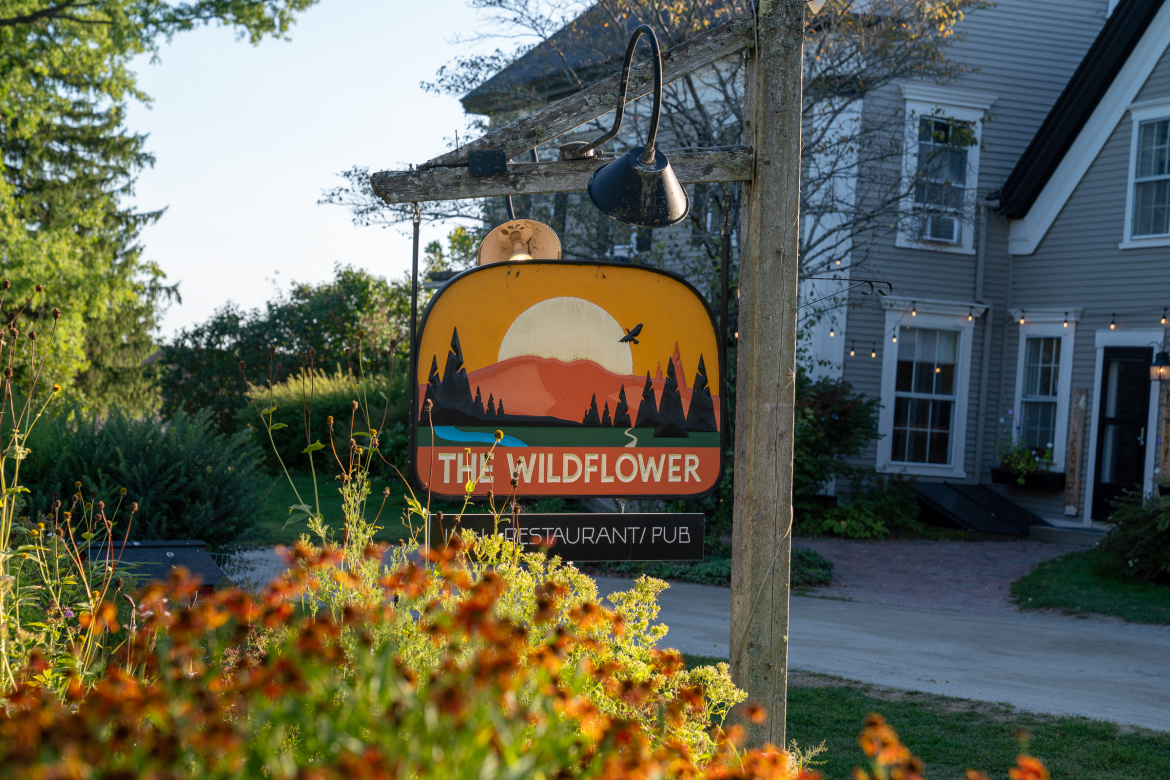
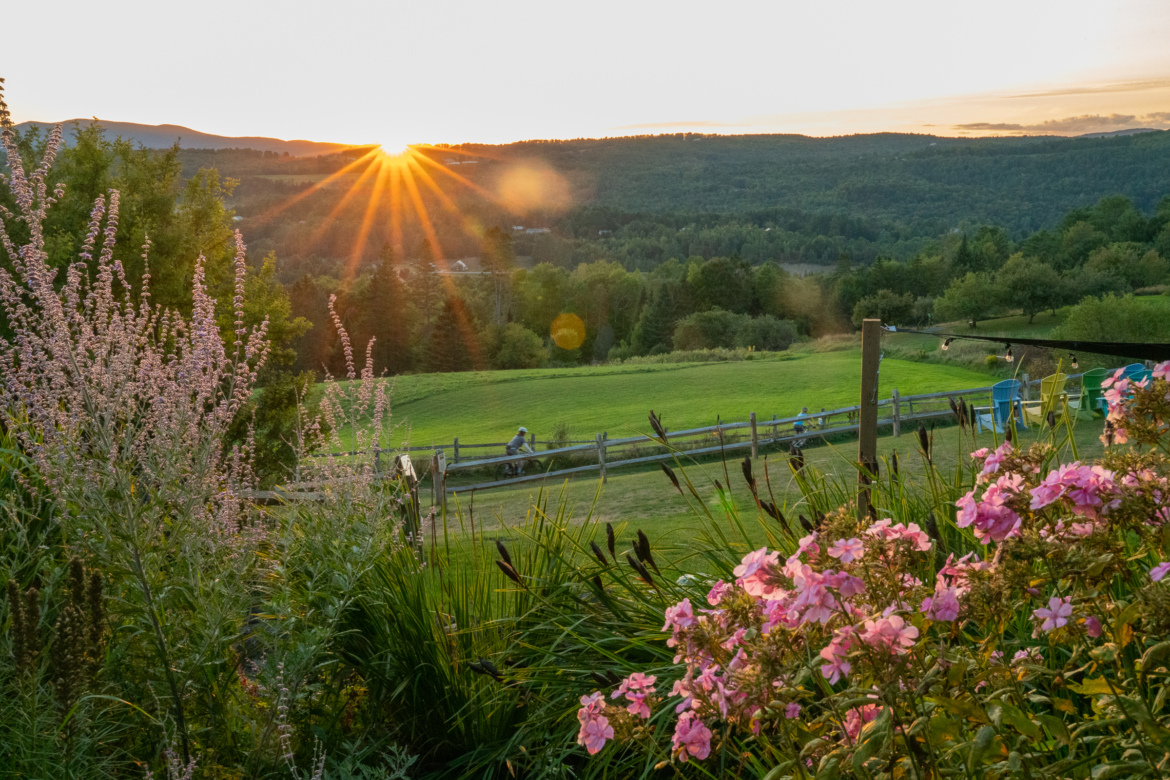
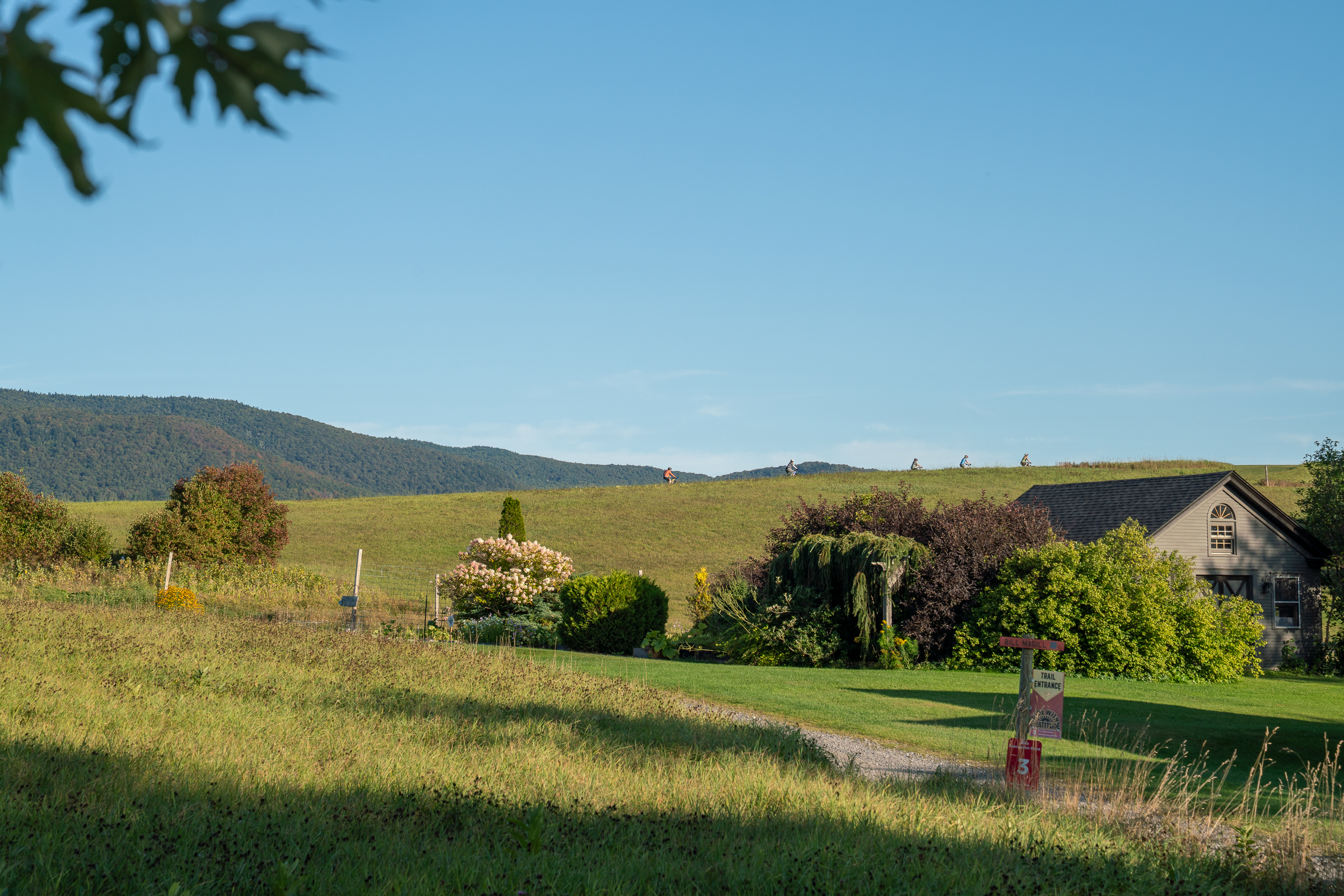
To be clear, Darling Hill and specifically the Wildflower Inn remain a hub for riders. On a sunny and warm September weekday afternoon, the Backyard was filled with young, enthusiastic riders who appeared to be part of a team. Up the hill, adults gathered for what appeared to be a standing group ride beginning at Rifugio, a full-service bike shop and gathering space for the community.
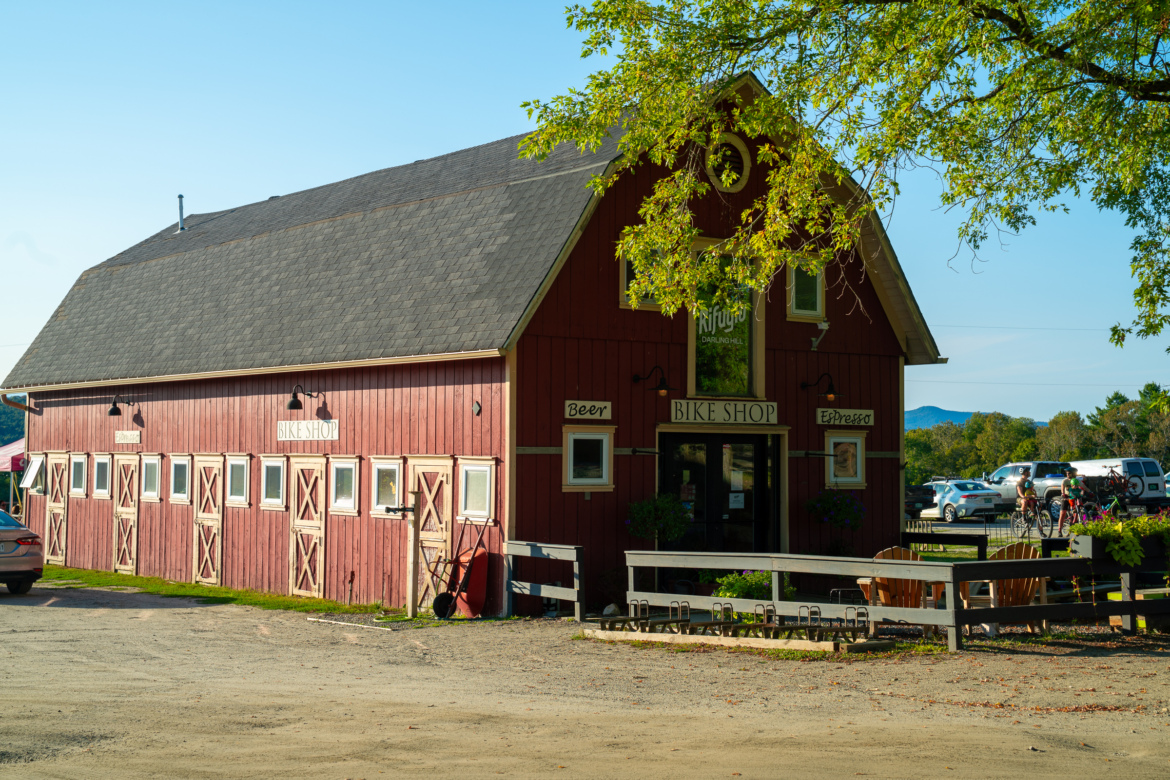
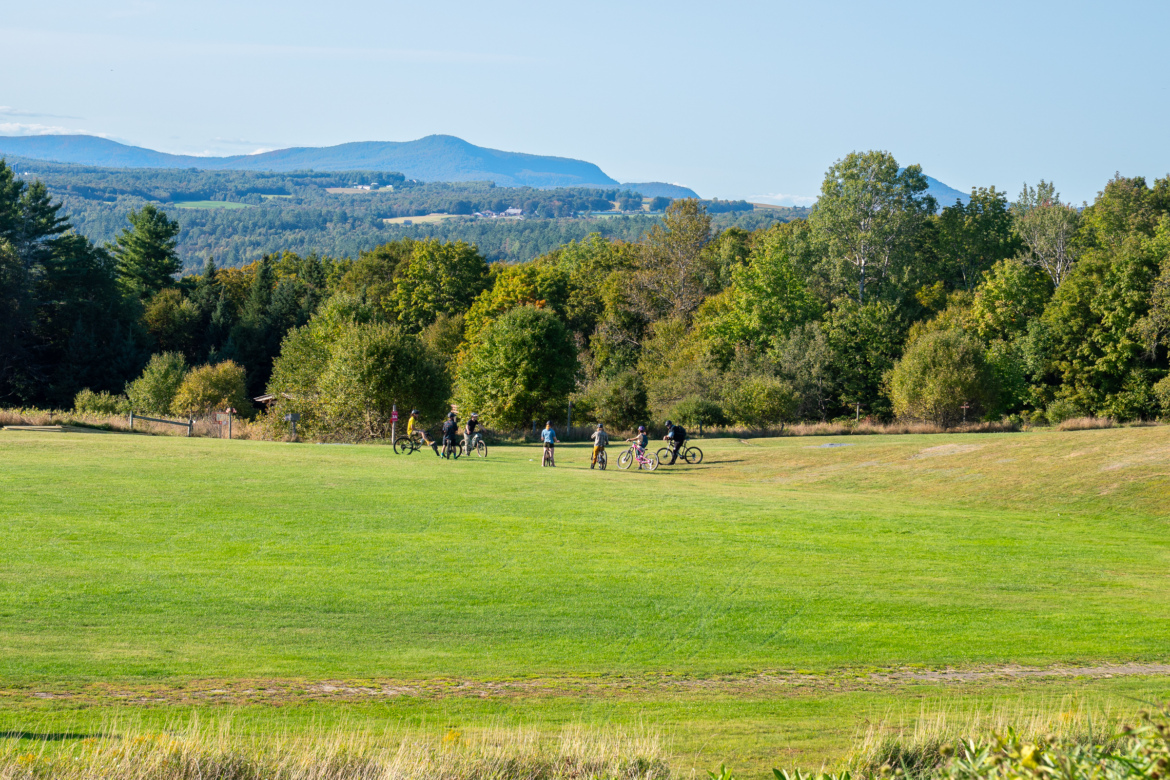
Though I enjoyed riding and hanging out in this zone, Kingdom Trails truly is so much more than Darling Hill.
Moose Haven is a berm haven
Next up on our adventure, Greg and I drove over to the East Haven Trailhead, aka Moose Haven. The Kingdom Trails Association has made an effort to rework and certify many of their trails for adaptive mountain bike (aMTB) use, and today the group says 53 out of the 100+ miles of trails are aMTB accessible. Nearly all of the trails in the Moose Haven zone are aMTB trails, though you’d be wrong to assume the trails are watered down or boring. On the contrary, it was here that Greg and I found one of the best trails of the day: Black Bear.
A stiff, sustained climb up a gravel road is required to get to the top of Black Bear, which sits nearly 800ft above the trailhead parking lot. We enjoyed sandwiches in a gazebo in a field at the top with 360° views of the surrounding mountains and forest.
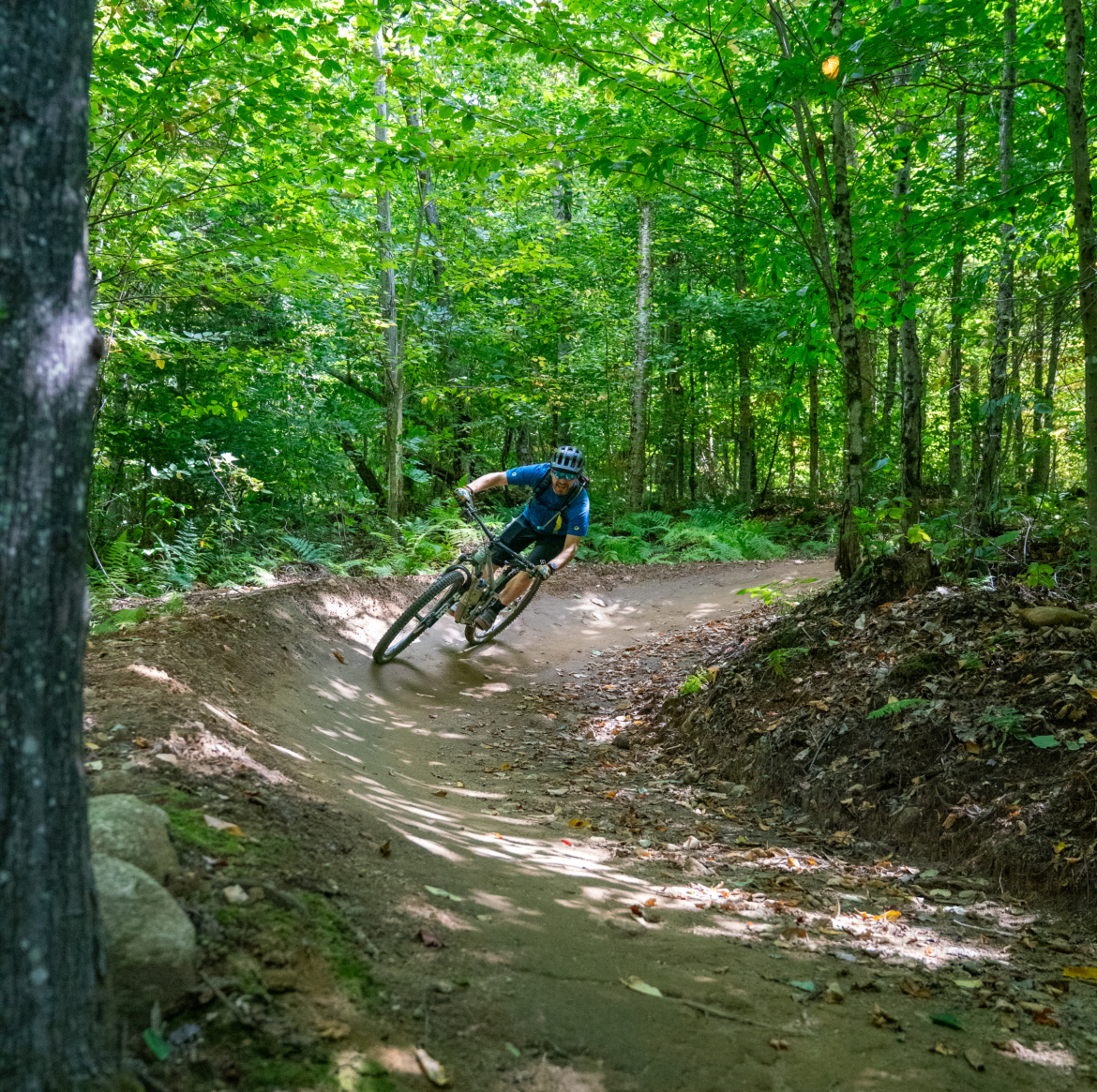
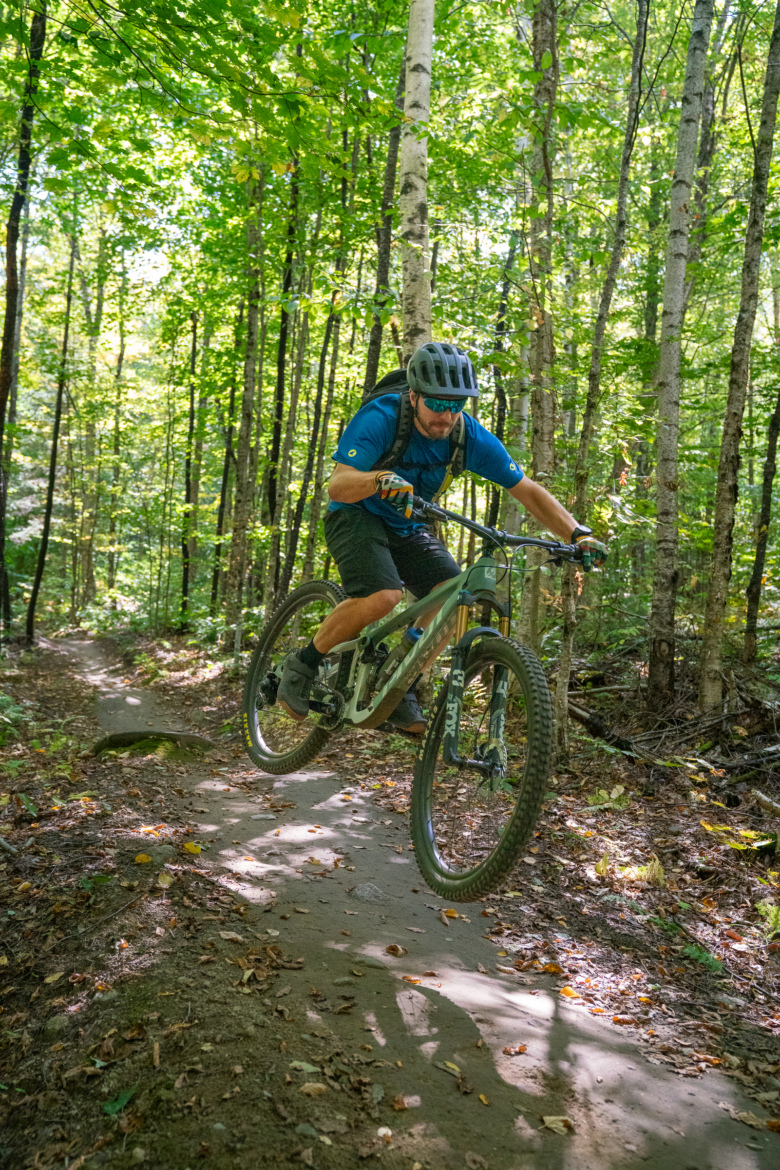
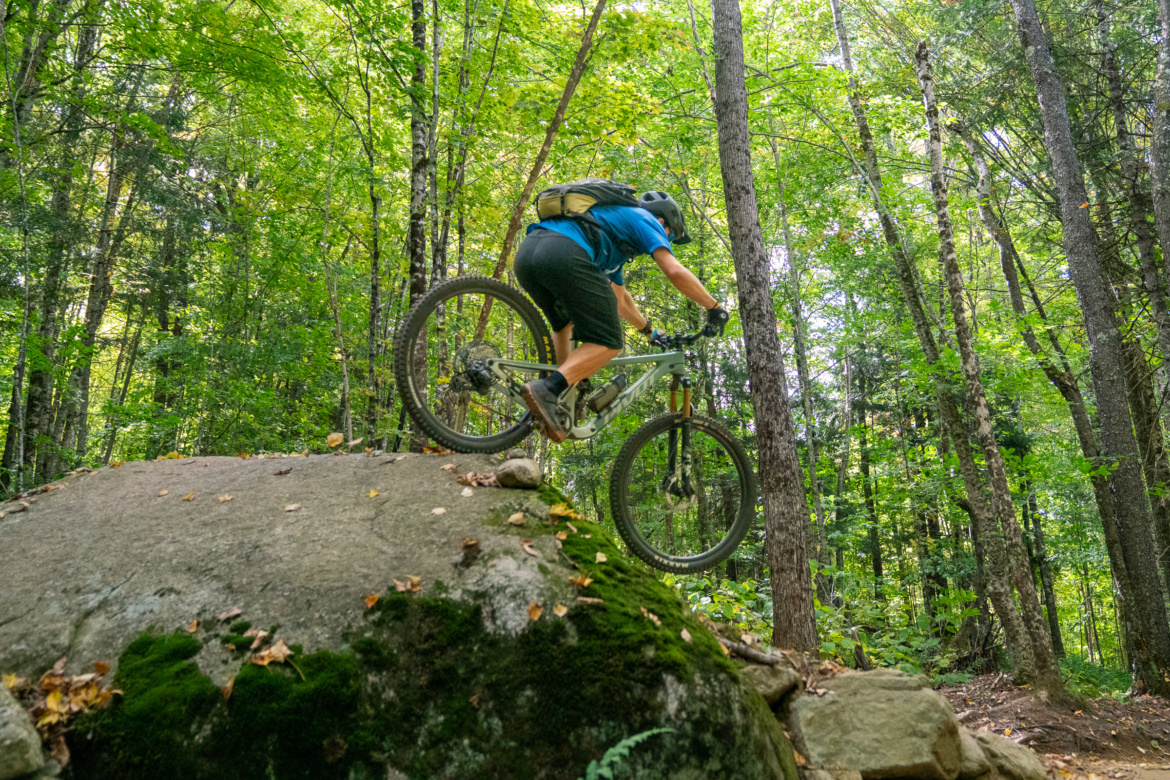
Once the intermediate-rated descent begins, it’s a full-on, two-and-a-half-mile pump track down the hill. The trail grade starts out pretty flat but soon settles into about a seven percent grade, dishing up small- to medium-sized kickers, doubles, and berms at a rapid clip. About midway down, we stopped to session a rock roll before continuing our nearly brakeless descent. Black Bear is the rare and welcome trail that feels like you descend more than you climb.
Gould tells me that the Black Bear trail was built more than five years ago by Knight Ide and his trailbuilding company, Ide Ride. However, the trail is regularly reworked each spring to keep it in top shape. Riding the trail in September at the tail end of the season, it rolled fast and smooth. If this is what the trail is like after thousands of riders have schralped it, I’ve got to come back in the spring to ride it when it’s fresh!
This month, following our visit, the Kingdom Trails Association opened a new trail in the Moose Haven zone called Flying Monkeys, which was also built by Ide Ride. This one is basically a freeride trail, with kickers, drops, wooden features, and gaps for the sendiest riders.
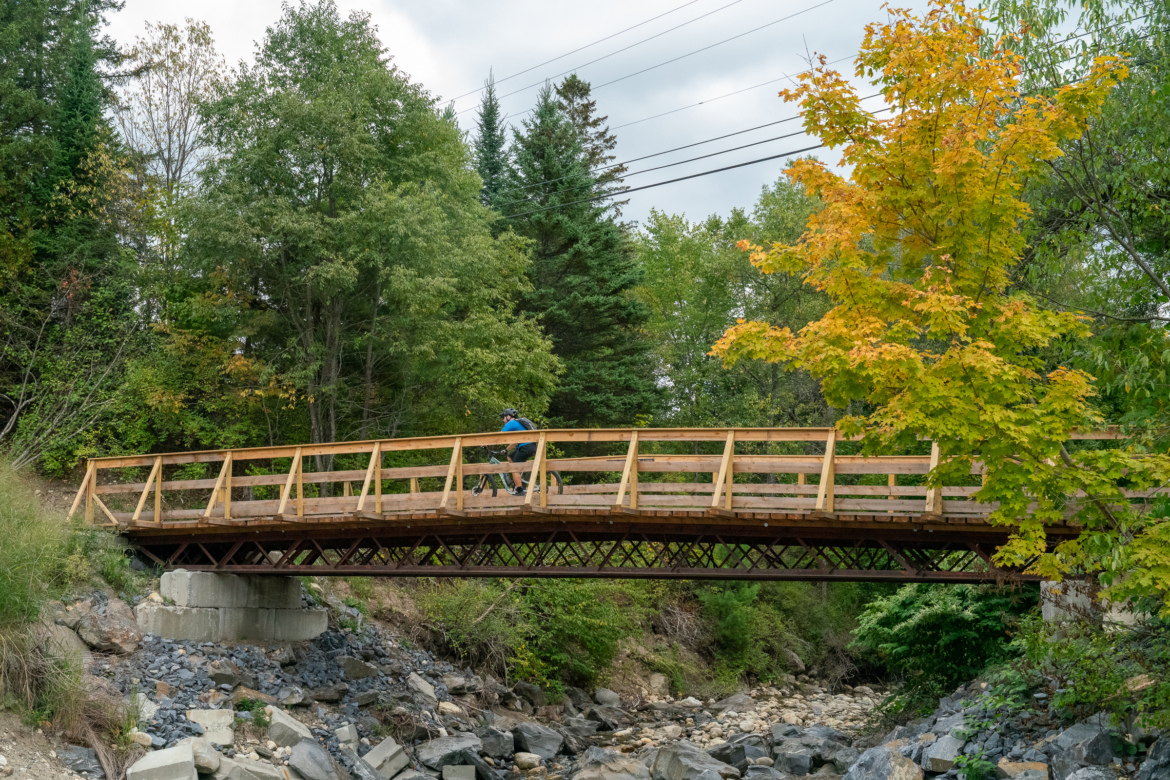
East Burke trails
Looking at a map of Kingdom Trails, the town of East Burke sits smack in the middle of the action. This is where the Kingdom Trails Association headquarters is located, and there’s a small retail shop here where you can pick up merch to help support the group’s work. Around back, you’ll find a massive parking lot and Mike’s Tiki bar, a popular gathering spot for riders finishing their day. Greg and I only had about six hours to check out Kingdom Trails, so our ride from the East Burke trailhead would sadly be our last for this trip.
Across the bridge from town, a tight squiggle of trails includes Kitchel, another Ide Ride-built trail that riders still rave about. We chatted with a father and son at the top of Black Bear who had ridden this zone the day before, and they highly recommended it.
Hungry for a more challenging ride, we made our way to Beat Bog, which in hindsight, wasn’t a great choice. Like the Widow Maker trail we rode to start the day, Beat Bog is a wide, pedally trail with small roots and neither technical challenge nor flow. Perhaps this is where other riders run into disappointment as well. If you’re looking for rocky, technical, and challenging trails, Vermont has plenty of that. Just not at Kingdom Trails.
It’s at this point that I should acknowledge the main complaint riders have about Kingdom Trails: the trail difficulty ratings aren’t very accurate. For example, Sidewinder, one of the trails we rode earlier in the day, is rated a double-black diamond, though I think most riders would agree it’s a thrilling blue.
Of course, much has been said about the difficulty of rating trail difficulties, and Kingdom Trails isn’t the first trail system — or the last — to be criticized for its difficulty ratings.
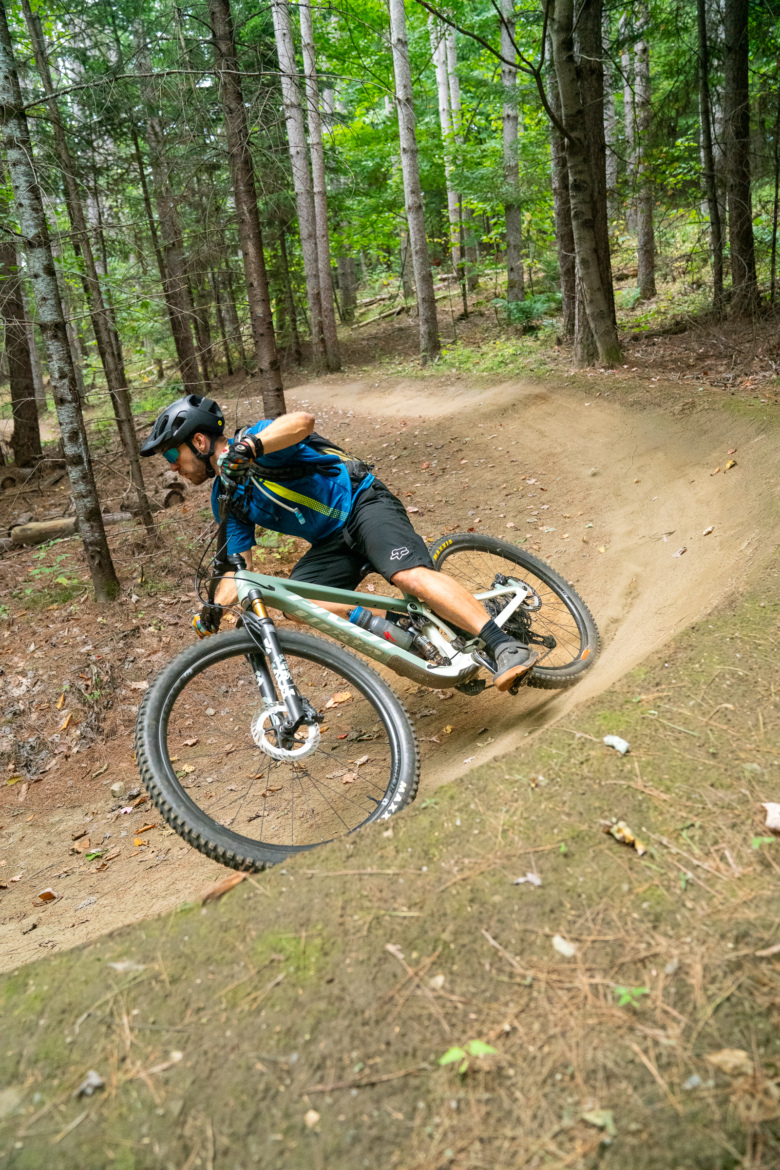
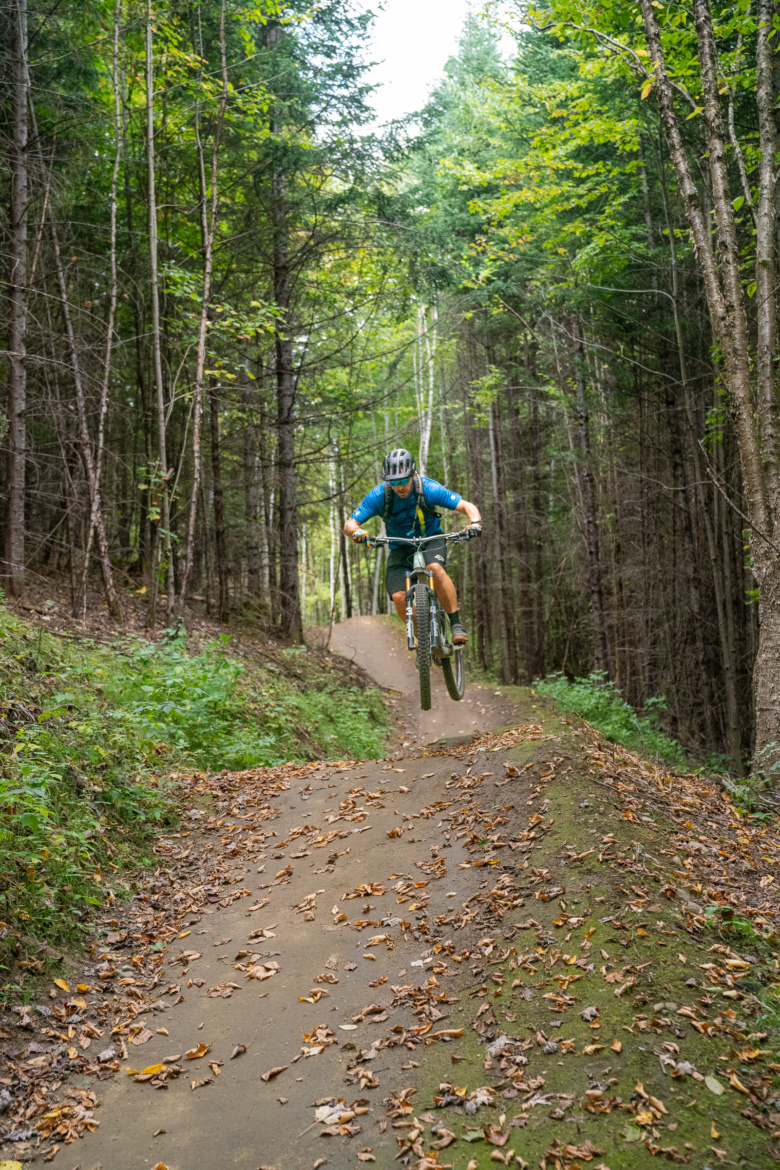
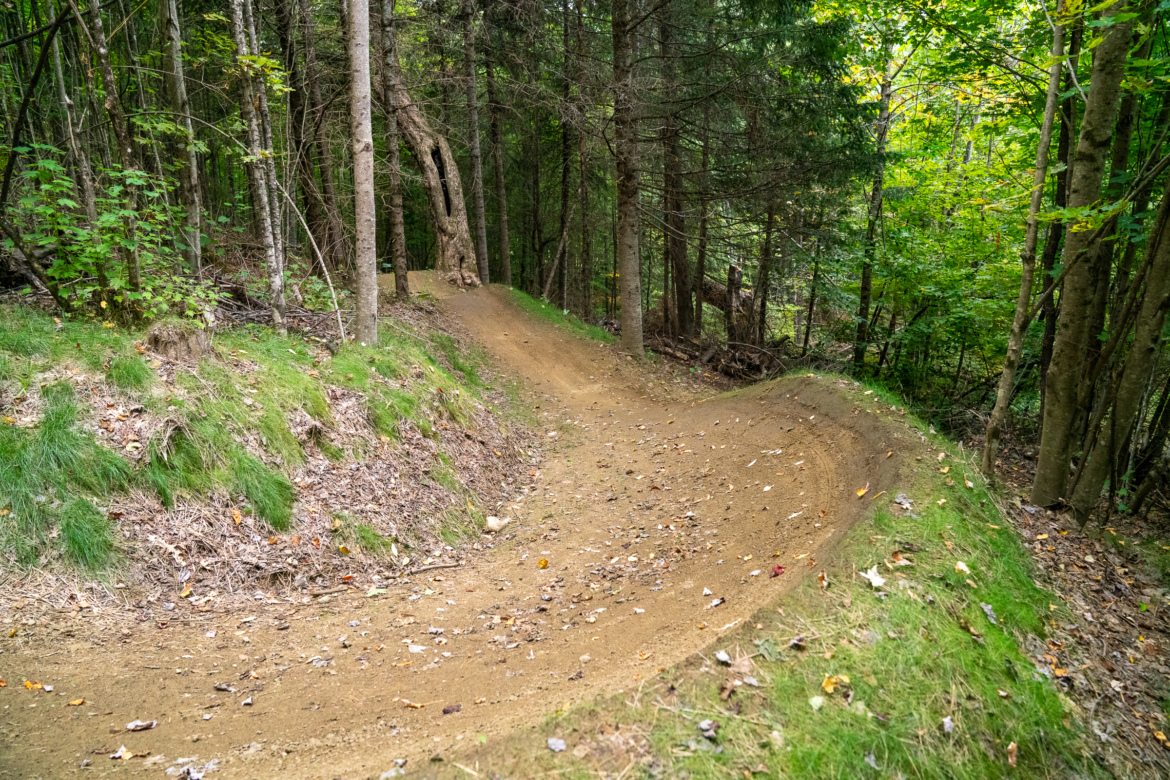
For maximum smiles, I suggest embracing Kingdom Trails for what it is, and pointing your tires down a trail like Kitchel, or Herb, or Drop It. TBH, I’m not sure which trail was which, but they were all fantastic, with big flowing lines and massive jumps if you want to hit them. Or just roll them like I did, and you’ll still have a blast.
Drawing riders back to Kingdom Trails
While many popular mountain bike destinations around the US saw a surge of visitors during the pandemic, Kingdom Trails actually saw a drop in visits. Many tourists come from Canada, and with the border closed in the early 2020s, ridership declined. In fact, Gould told me that Kingdom Trail visits are still below their pre-pandemic levels.
To bring riders back, Kingdom Trails is leaning into their core values, the first two of which are welcoming all who visit and live in the region and prioritizing access and inclusion. With that in mind, the group is not only working to serve adaptive riders, but they also opened the trails to eMTBs this summer. While we didn’t find throngs of electric bikes on the trails during our visit, it’s surely welcome news given the limited number of legal trail options for e-riders.
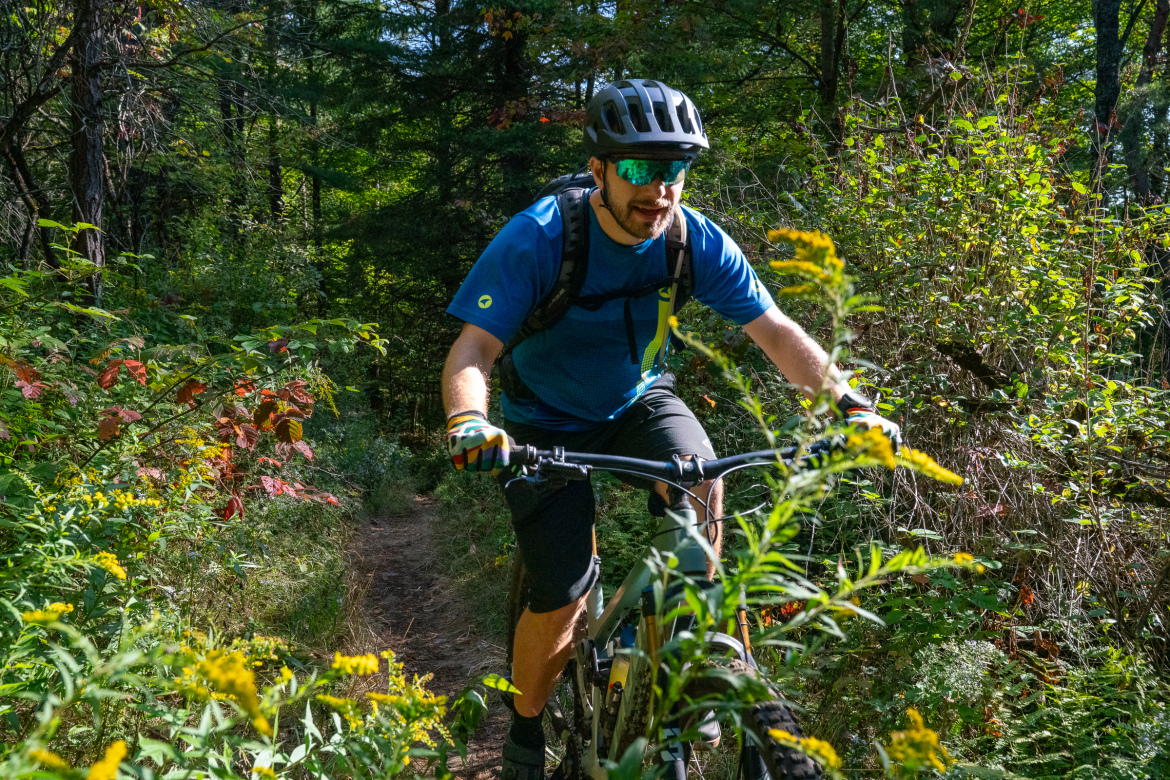
The Kingdom Trails is a non-profit association whose mission is “to provide recreation and education opportunities by managing, maintaining, and building trails to foster the health of our local community, surrounding environment, and regional economy.” Signing an online waiver and purchasing a membership are required to ride at Kingdom Trails, and both can be done using a QR code posted at any one of the trail signs located around the network. A one-day individual membership costs $20, and youth, family, and annual membership options are available.
Those membership fees add up, and the association is able to plow funds back into trail building, maintenance, and programming to benefit the entire community. It’s a fairly unusual model, and one that seems to be working well.
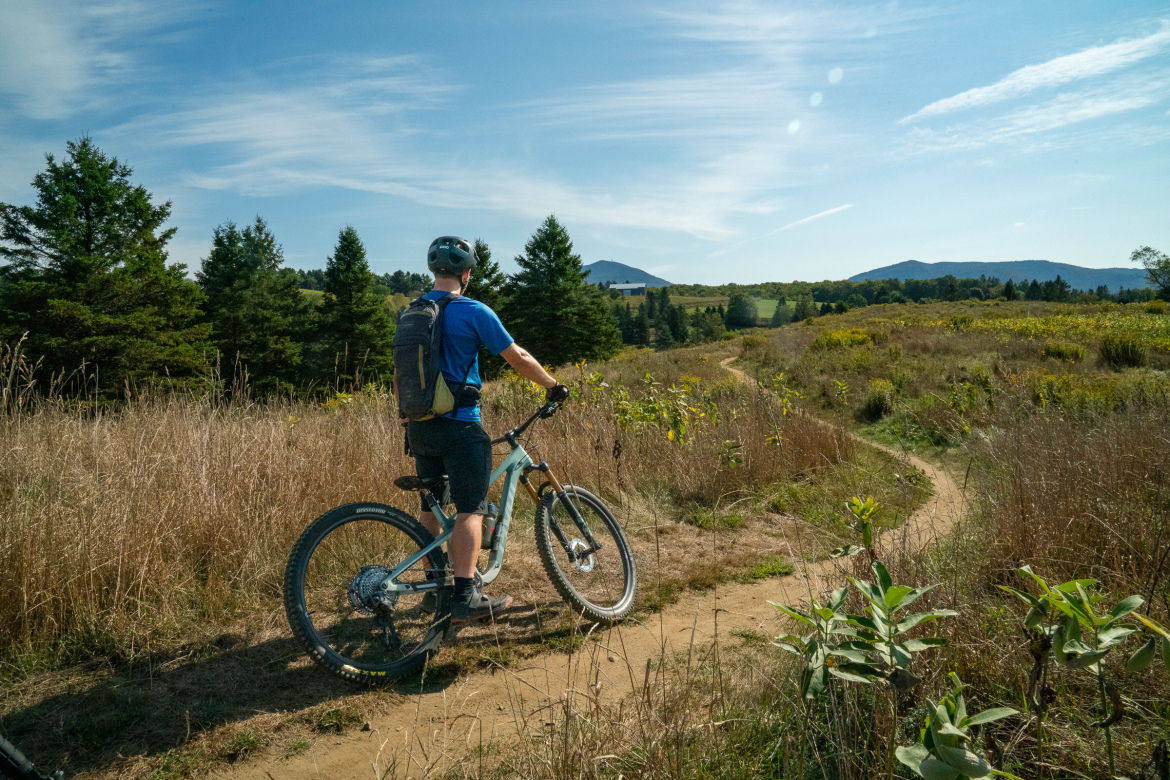
Back for more
Now that I’ve ridden there, I have a new (and updated) perspective on what Kingdom Trails has to offer. No, Kingdom Trails isn’t the black-diamond Widow Maker trail — not that it ever really was. It’s flow trails, and aMTB, and yes, even e-bikes. It’s not like a resort where you drive up and all the best trails rolls out before you. No, to find the most blissful threads, you really have to move around and explore.
After our final ride, I stopped into the Kingdom Trails shop to pick up a souvenir. I decided to purchase a two-and-a-half-foot trail sign that says “Widow Maker.” Maybe I am sentimental after all.


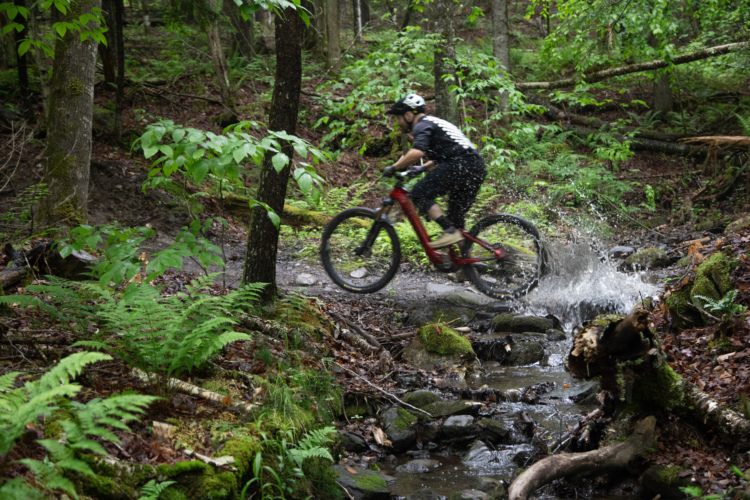
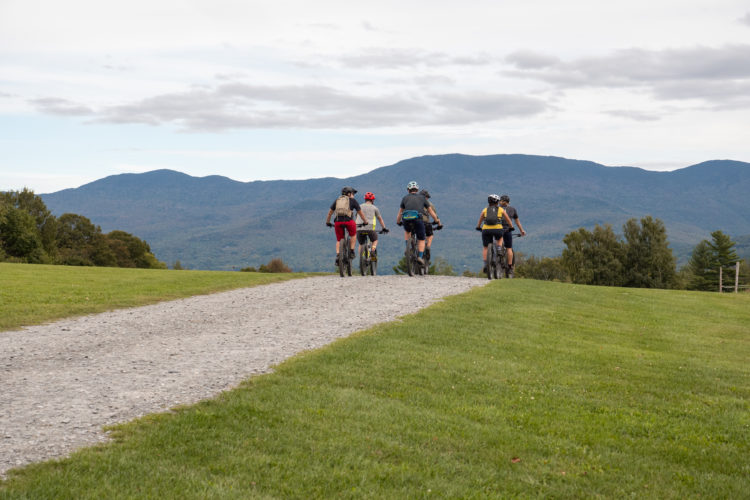



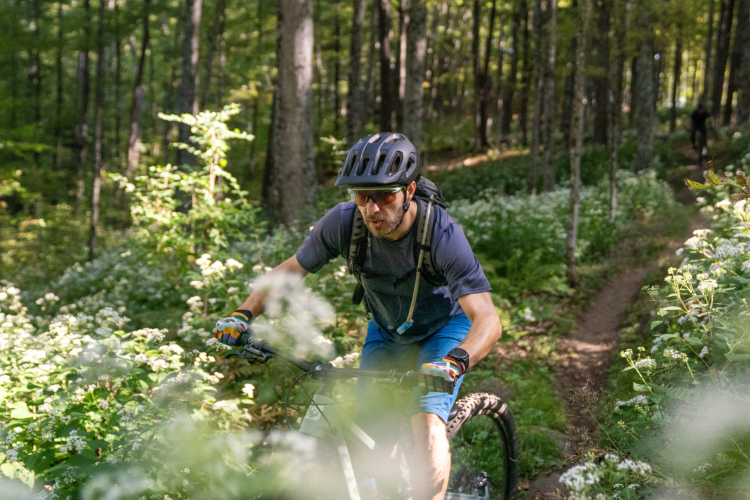
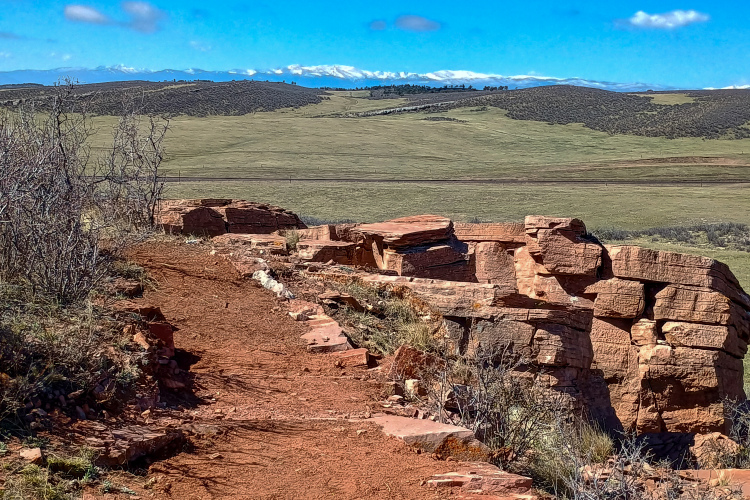
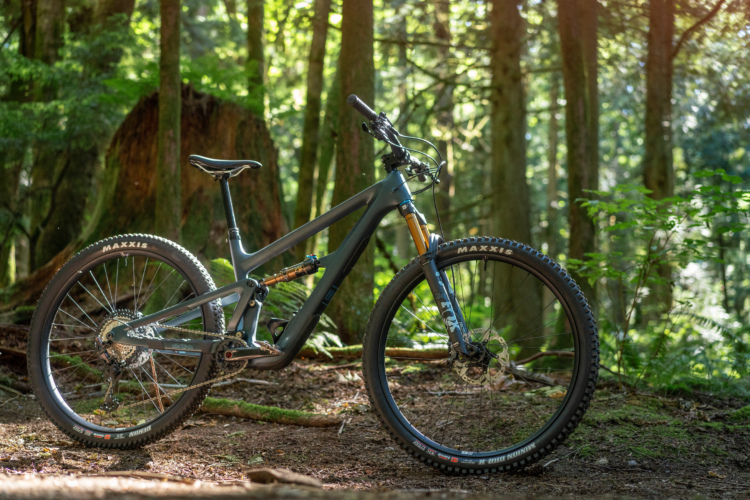

7 Comments
Oct 27, 2025
Oct 27, 2025
Oct 27, 2025
Oct 31, 2025
Oct 30, 2025
Oct 30, 2025
On a gravel bike, some of the trails would be a lot of fun, but you definitely won't get max smiles out of a trail like Black Bear.
Oct 28, 2025